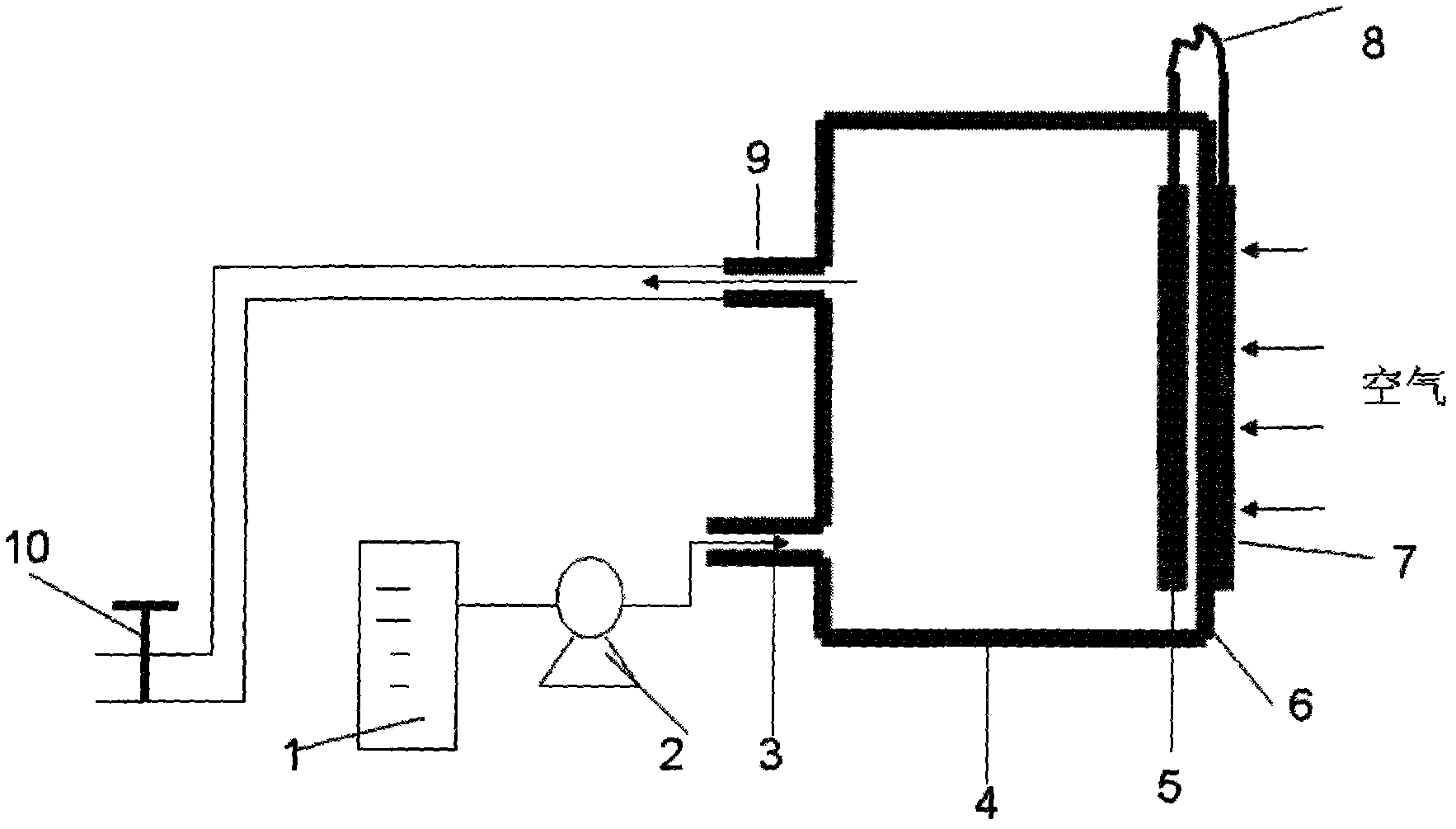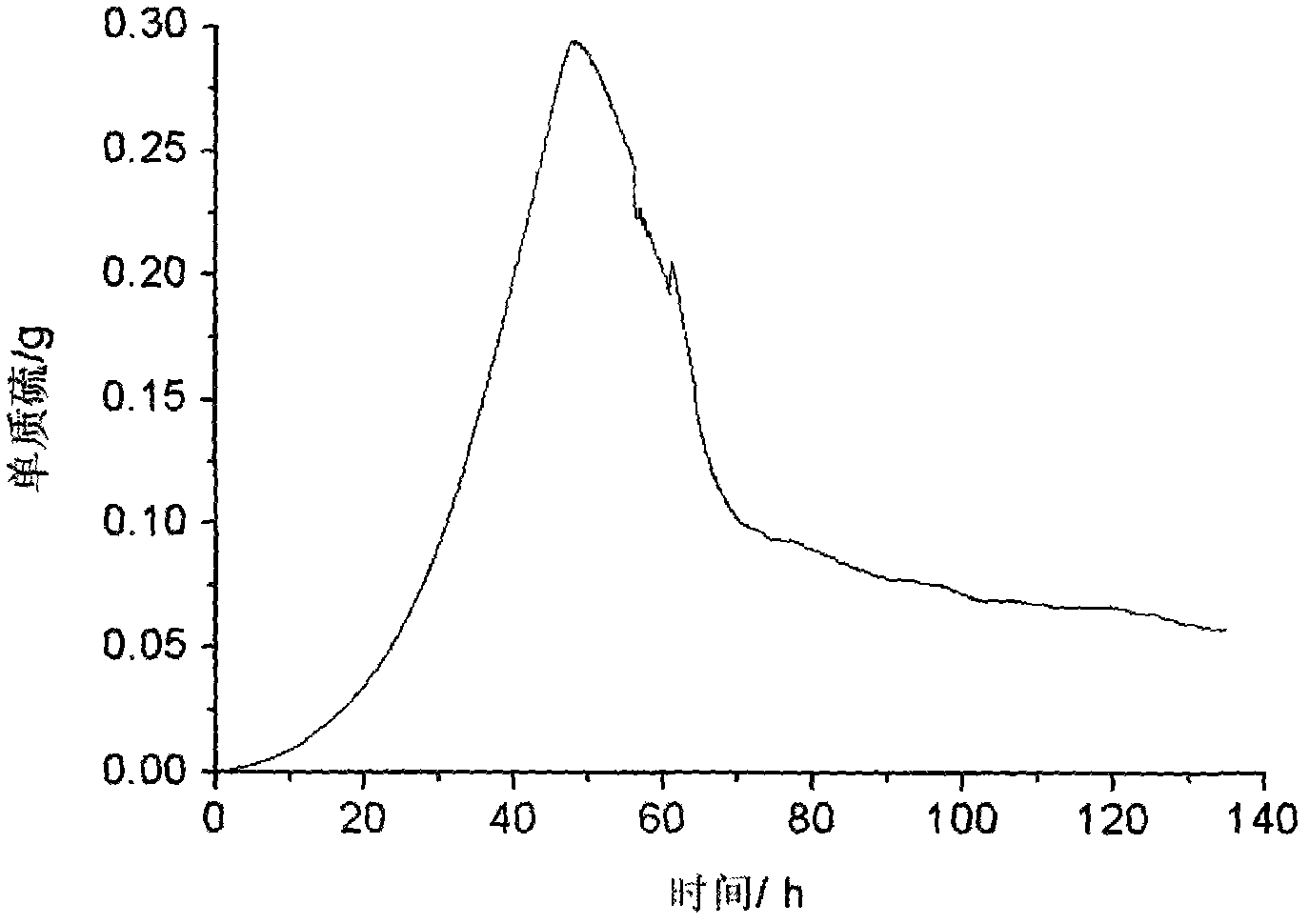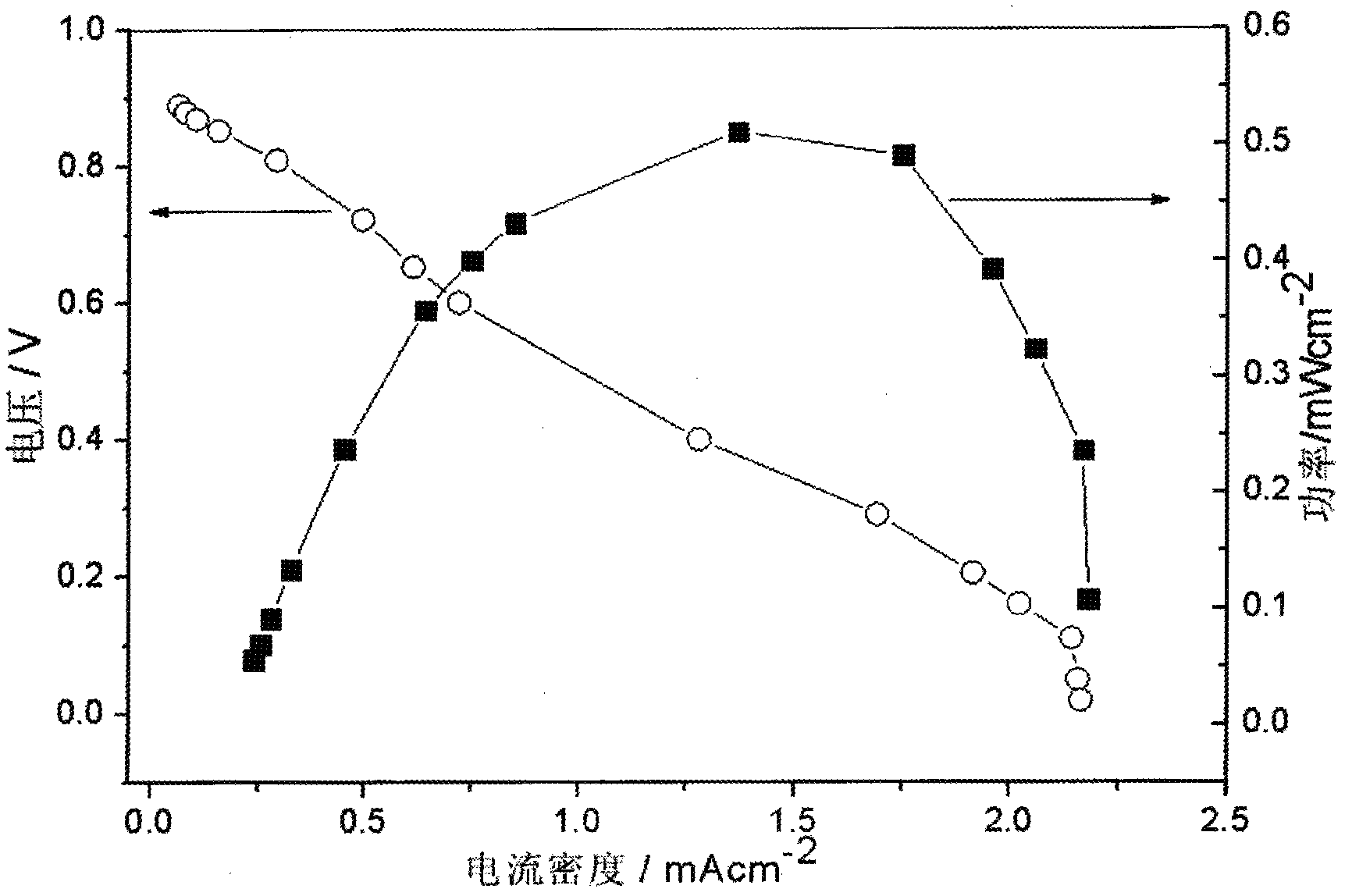Microbiological fuel cell for treating sulfur-containing wastewater
A technology of fuel cells and microorganisms, which is applied in the field of water pollution treatment, can solve the problems of low investment, high energy consumption, and high investment, and achieve the effect of synchronizing treatment and electricity production and being easy to recycle.
- Summary
- Abstract
- Description
- Claims
- Application Information
AI Technical Summary
Problems solved by technology
Method used
Image
Examples
Embodiment Construction
[0011] Specific implementation plan
[0012] Such as figure 1 As shown, the microbial fuel cell used in desulfurization treatment is composed of a monopolar chamber, the reaction system is a fed-in system, the anode 5 is activated carbon cloth, and sulfur-reducing bacteria form an electricity-producing biofilm on it, and it is placed in the anode chamber In the solution, the cathode is directly exposed to the air, and the artificial wastewater containing sulfate is sent from the liquid storage tank 1 to the water inlet at the lower part through the air pump, and the water outlet is at the upper part, so as to ensure that the entire reaction system is in an anaerobic state. The microbial fuel cell of the present invention treats sulfur-containing wastewater. The sulfide content in the wastewater is 54.72g. After 140h of operation, the sulfide content in the wastewater is 0.18g, which generates 12.3g of sulfur, and the removal rate of sulfide reaches 99%. Electricity production per...
PUM
 Login to View More
Login to View More Abstract
Description
Claims
Application Information
 Login to View More
Login to View More - R&D
- Intellectual Property
- Life Sciences
- Materials
- Tech Scout
- Unparalleled Data Quality
- Higher Quality Content
- 60% Fewer Hallucinations
Browse by: Latest US Patents, China's latest patents, Technical Efficacy Thesaurus, Application Domain, Technology Topic, Popular Technical Reports.
© 2025 PatSnap. All rights reserved.Legal|Privacy policy|Modern Slavery Act Transparency Statement|Sitemap|About US| Contact US: help@patsnap.com



